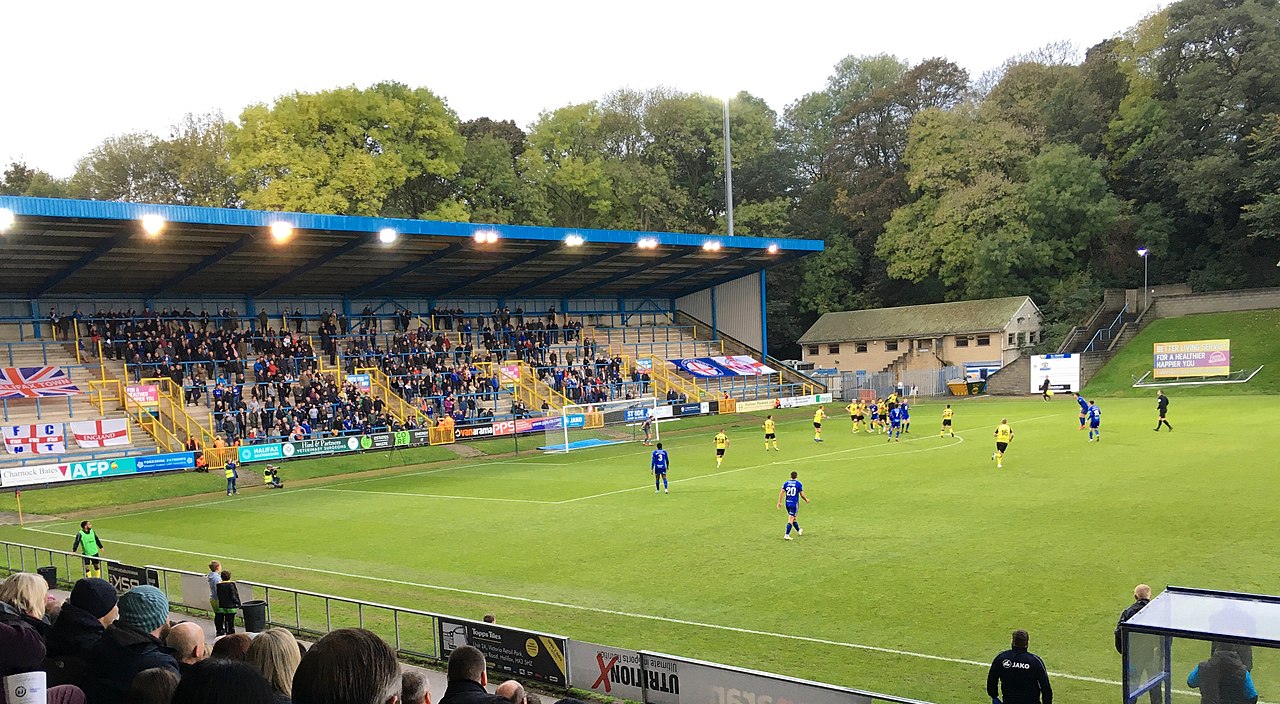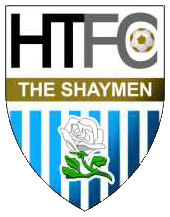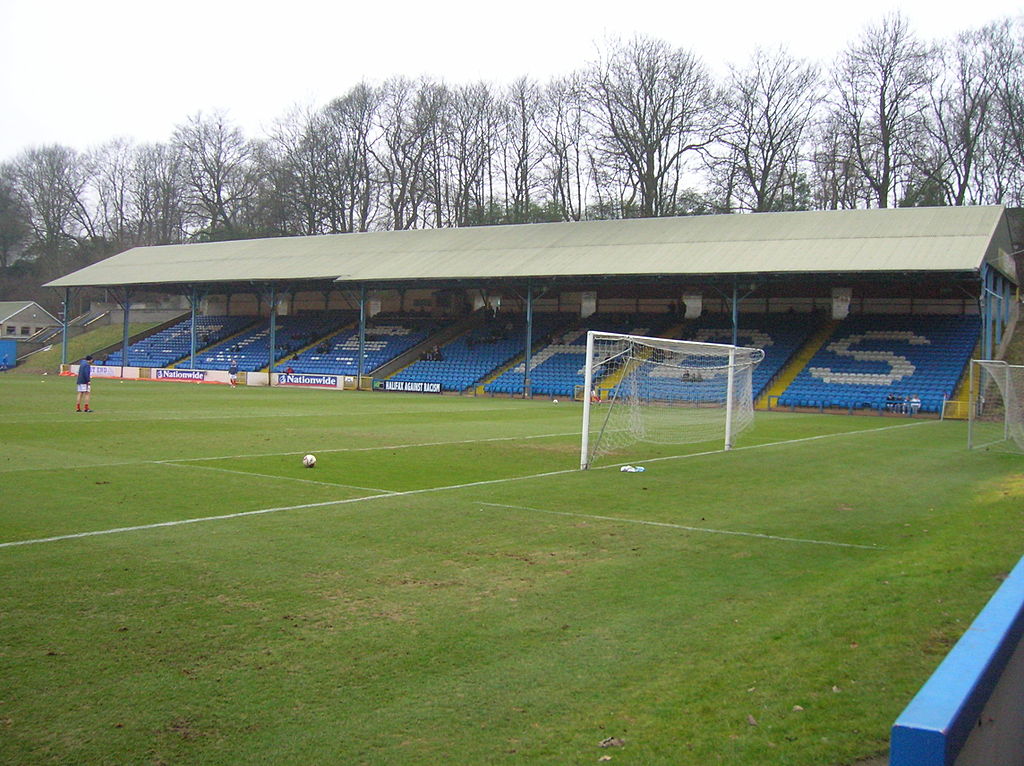
Hello and welcome to this site dedicated to our beloved football club, Halifax Town AFC. The football club, as it were, is now defunct. Still, the club was reformed, after much deliberation, about 15 years ago and it now operates under the name FC Halifax Town.
The interesting story surrounding the bizarre dissolution and then reform of the football club in Halifax, West Yorkshire is what prompted us to make this website as the information online is quite scarce.
We are going to discuss how Halifax Town AFC came to be; first, we will be looking at its beginnings, then we will concentrate on how the club performed in various competitions and who were some of its star players, and later, we will also talk about its inevitable downfall and dissolution.
We hope that by bringing the history of Halifax Town AFC to light, more people will learn about it and learn precisely what not to do in a situation like this (if you ever find yourself on the board of directors for an English football club).
Enjoy the rollercoaster of events and emotions surrounding the elusive Halifax Town AFC.
Formation of Halifax Town AFC
 The Halifax football club was formed in response to locals hoping to cheer for their very own team. West Yorkshire had traditionally been a heartland for rugby but that was beginning to change with the advent of the new century. Most towns bordering Halifax already had football teams, some places like Bradford even had two, so it was long overdue for Halifax to form a club as well.
The Halifax football club was formed in response to locals hoping to cheer for their very own team. West Yorkshire had traditionally been a heartland for rugby but that was beginning to change with the advent of the new century. Most towns bordering Halifax already had football teams, some places like Bradford even had two, so it was long overdue for Halifax to form a club as well.
One “concerned” citizen by the name of Ernest Albert Jones posed that question in the issue of the Halifax Courier dating to 20th May 1911. Mr. Jones proposed ‘a football referendum’ to take place where citizens of Halifax could gather and discuss the formation of a local football club to rival those of their neighbours.
Jones noted that despite the lack of a football team, people from Halifax still watched professional football but they had to go to other towns to do so. Jones argued that the investment was worth it as those football fans would instead contribute to the town’s coffers.
He asked all those interested in football to respond to his letter and say whether they wanted to have their own team. Jones’ proposition was successful and merely three days later, on 23 May 1911, townspeople gathered in the famous Saddle Hotel to discuss the possibility of forming a club.
Joe McClelland, a Halifax-born football player and then secretary of the Halifax & District Association League, devised a scheme for the operation of a football club. Jones announced that Halifax had its own team then, called Halifax Town AFC.
The club was formed as a public limited company with £1,000 capital and £1 shares. Fifty people came forward and became guarantors; Dr. Howie Muir appealed to donors by saying that he hopes they treat the club as their child and that they have a personal interest in its success that could lead to Halifax Town AFC becoming a strong competitor in the football scene.
Dr Muir was soon chosen to be the club’s first chairman. A second meeting, which took place on 8 June 1911, worked out the kinks associated with the formation of the club which now had a business strategy and a full board of directors, namely Dr Howie Muir, Edmund Braginton, Walter Tweedy, William R. Black, Egerton Denison, William Corner Stansfield, H.A Brown and Richard Edgar Horsfall.
First Season
The directors went immediately to work and by their next meeting, Halifax Town AFC was made a member of the Yorkshire Combination (local football league which existed between 1910 and 1914). Now all they needed were players, but that was not such a difficult task as footballers from the area quickly applied for the job after seeing newspaper ads.

McClelland was tasked with forming the squad as the de facto secretary and first manager of Halifax Town AFC. Some of the known members of this first team were Horace Finch, Charlie Morgan, Joe Chadbourne, Jock Nixon, and George Wild.
The first ever match of Halifax Town AFC was against the reigning champions of the Yorkshire Combination – Bradford City Reserves – on 9 September 1911. Sadly, our men lost 6-2, and they only won in their third game against Knaresborough (2-1).
Surprisingly, despite being the newcomers in the league, Halifax actually went on to top the ladder by the end of 1911, having achieved a particularly impressive win against York City (7-1) in December of that year. Unfortunately, they couldn’t keep up the same shape the following year and they barely won 3 games out of 9, finishing at 7th place.
At the same time, they were busy with the West Riding Junior Cup, hoping to win it as the ultimate underdog. Halifax Town AFC did much better in that competition and they reached the final. The game took place on 13 April 1912 against the reigning champions Mirfield United but despite their best efforts, Halifax lost.
It seems like passion alone could not suffice and Halifax suffered a few bad defeats, but considering how quickly the team was formed and that it came at second place for the West Riding Junior Cup only 10 months after its creation, you could say that they had a pretty strong first season.
The Shay
Every football team deserves a stadium to be proud of, and chairman Muir was in the process of securing one. The Yorkshire Combination had disbanded in 1914, and Halifax Town AFC joined the Midland League.
Halifax Town AFC was slowly but steadily moving up the ranks and as such it needed to update its grounds to reflect that. Halifax first played at Sandhall Lane, and later Exley, both of which were unsuitable for the purpose.
Dr Muir proposed building on the Shay and the Halifax Courier once again helped the team by setting up a fund to help with building costs. Construction began on 16 October 1920, and directors, along with fans worked hard to bring their dream stadium to life.
In March 1921, Halifax Town AFC was further promoted, having been elected to join the Football League (the first football league in the world and the former top-level league in England before the founding of Premier League) where they formed Division Three North.
This meant that the first game on the Shay was bound to be historical, now with Halifax Town AFC playing in the prestigious Football League. That happened on 3 September 1921 when Halifax faced Darlington and won 5-0; an impressive victory on their new stadium and in their new league for a crowd of 10,000 people which was unprecedented.
Although the team didn’t do that well in the 1921/1922 season, the fans were ecstatic and the term Shaymen began to circulate and it’s still in use today (proudly displayed on the club’s badge).
The Shay could at one point hold up to 40,000 people and its top attendance was recorded on 14 February 1953 (36,885 people) against Tottenham Hotspur in the fifth round of the FA Cup. Sadly, these figures were to never be topped again.
Due to safety measures which were brought up as a result of numerous tragedies at football stadiums around the nation, the Shay’s capacity was gradually decreased over the years. For example, the capacity was scaled down to 25,000 in 1972, then to 16,500 in 1979, and then it reached the sad number of 1,777 in 1985, managing to slightly scale up in 1988 to 4,021 for a game with Nottingham Forrest in the FA Cup.
Financial Troubles
Halifax Town AFC seemed to inadvertently repeat their first season over and over again. For instance, they were leading in the Fourth Division in the 1998/1999 season up until the beginning of the new year when they fell off.
Still, the team managed to win a title, bagging the Conference Cup in 1997 with their striker Geoff Horsfield scoring 30 goals in the league and becoming the overall top-scored. However, that would unfortunately become the only cup that Halifax Town AFC would win.
In addition, by the time they won it, they were already struggling financially and experienced many hurdles. To begin with, the Shay was under threat due to insignificant financing, and the already mentioned reduced capacity. In 1986, Halifax Town AFC was on the verge of collapse and various companies were eyeing the grounds.
Fans appealed to the Calderdale Council (which owned the lease and had to greenlight any changes to the Shay) to save it but the stadium was in limbo for quite some time. There were plans to turn it add a shopping centre or to create a sports complex, but the council rejected them and the bidders eventually gave up.
In November 1986, the Inland Revenue demanded their £76,000 tax debt from Halifax Town AFC and all seemed lost. The then-managed Mick Jones immediately resigned and John Madeley had to sign an agreement with a property company to keep the Shay at least for the rest of the season.
Other plans such as a superstore and a new stadium at a different place followed, but they were all rejected. In 1998, Halifax Panthers (the town’s rugby team) moved into the Shay and together the two teams developed the grounds which now hold over 10,000, so the story has somewhat of a happy ending.
Dissolution

As you can imagine, the story of Halifax Town AFC did not end with the Shay. In 2007, Halifax was relegated and placed out of administration. Still, they managed to secure their place somehow but that was until something terrible was revealed.
It was found out that Halifax Town AFC owed over £800,000 to Her Majesty’s Revenue and Customs and that the club was overall £2 million in debt. It’s said that this was the result of an accounting error, but considering all that we know about the management of the club, it seems like it was yet another misstep in a long series of missteps.
It seemed like this was the end of Halifax Town AFC and the board of directors was ready to bid it goodbye. Although Halifax Town AFC was officially disbanded, a so-called phoenix club called FC Halifax Town was founded in 2008 and it even retained its board of directors. Still, it was relegated three places, competing in the Northern Premier League Division One North.
Present and Future
Nowadays, the new team plays in the National League (the fifth tier of English professional football). Not only that but it also won the FA Trophy in 2016 and more recently in 2023. FC Halifax Town seems to be doing even better than its famed predecessors, all we can do is wish it good luck and to keep an eye on its accounting.
